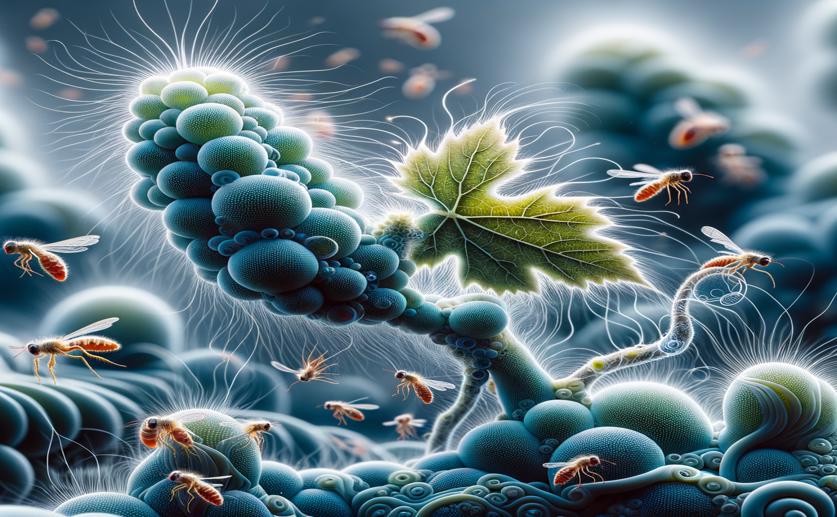
Hair-like Structures and Special Genes Help Grapevines Resist Insect Damage
Jenn Hoskins
27th June, 2024

Image Source: Natural Science News, 2024
Key Findings
- The study, conducted at The Ohio State University, found that 'GREM4' grapevines are more resistant to Japanese beetle herbivory than 'PN40024'
- 'GREM4' grapevines have higher leaf trichome densities, which deter beetle feeding
- 'GREM4' also has a higher expression of defense-related genes, contributing to its robust resistance
References
Main Study
1) Trichomes and unique gene expression confer insect herbivory resistance in Vitis labrusca grapevines.
Published 27th June, 2024
Journal: BMC plant biology
Issue: Vol 24, Issue 1, Jun 2024
Related Studies
2) Variation Within and Between Vitis spp. for Foliar Resistance to the Downy Mildew Pathogen Plasmopara viticola.
3) Ontogenic Resistance to Uncinula necator Varies by Genotype and Tissue Type in a Diverse Collection of Vitis spp.
4) MAPK signaling: a key element in plant defense response to insects.



 26th June, 2024 | Greg Howard
26th June, 2024 | Greg Howard